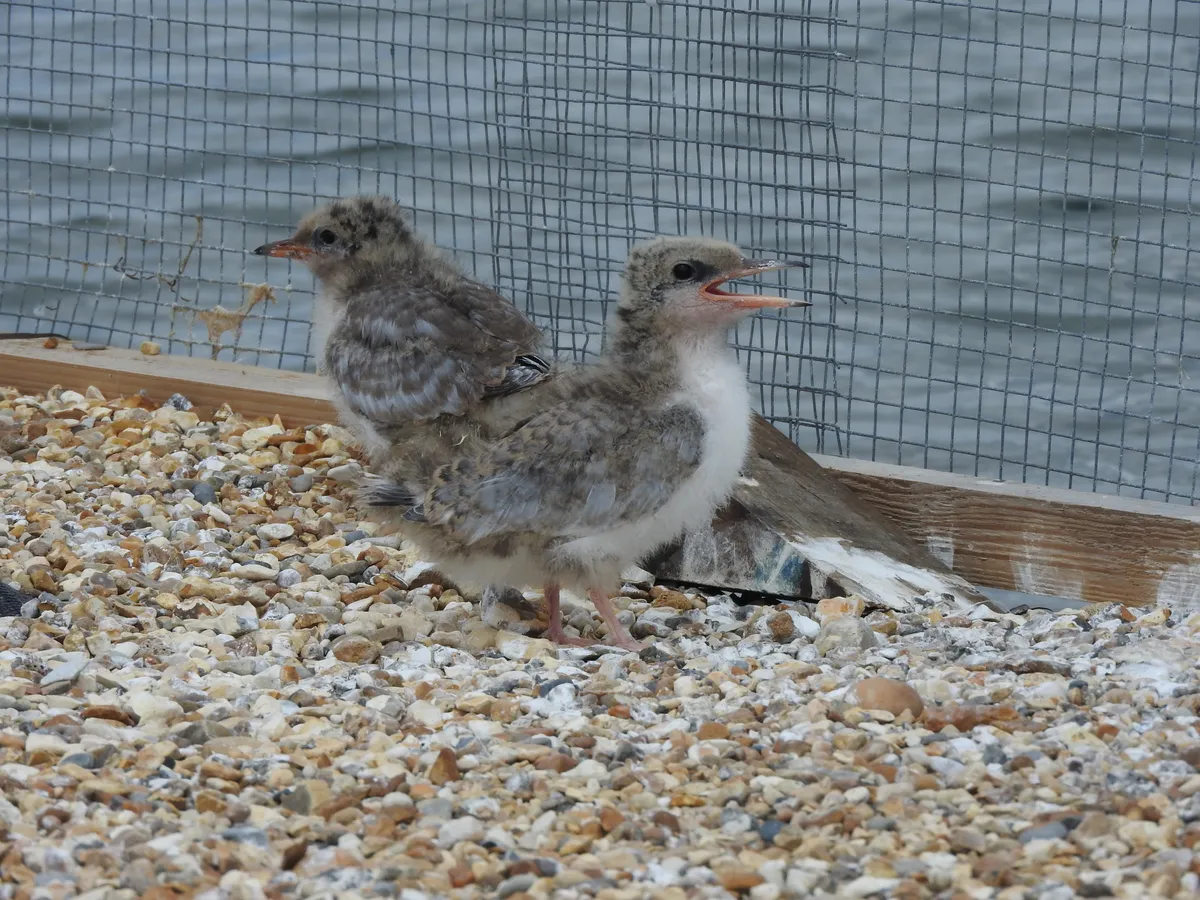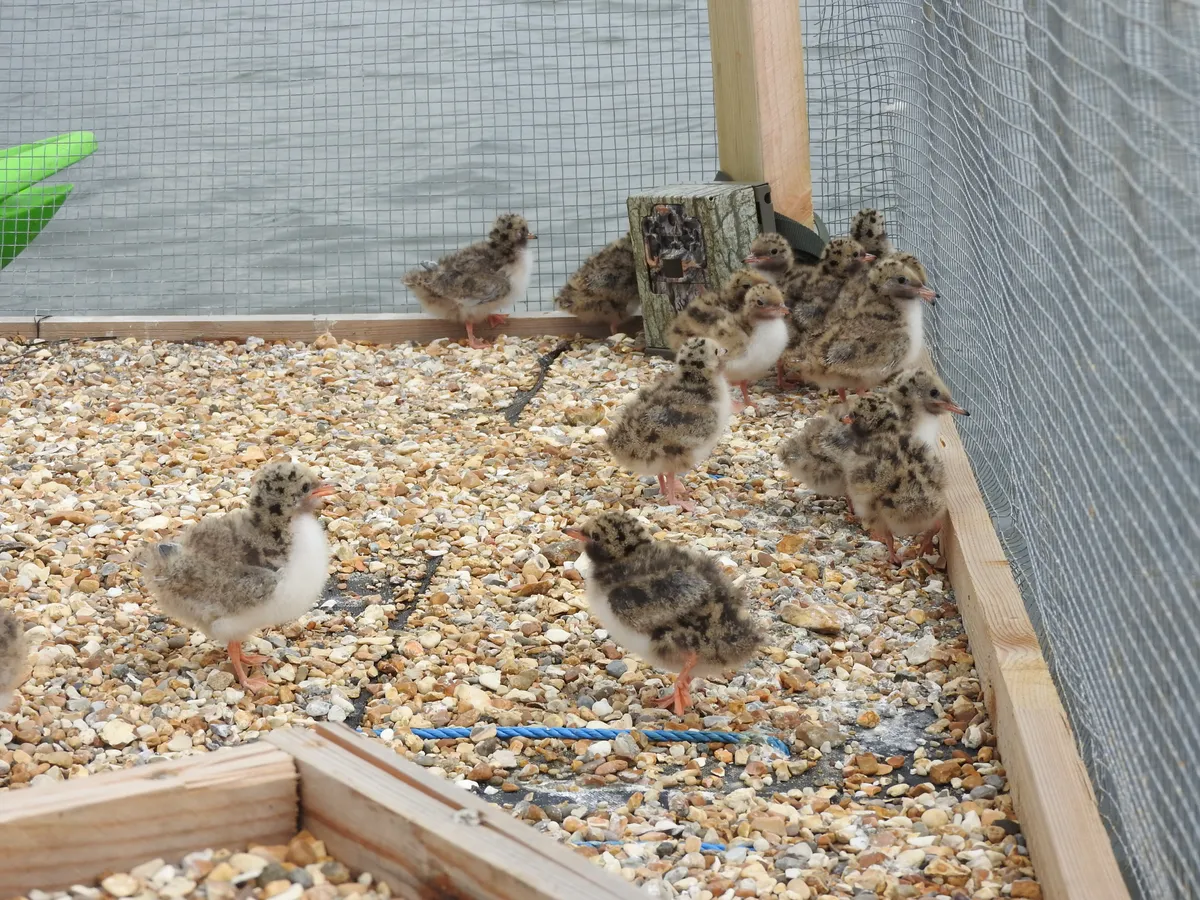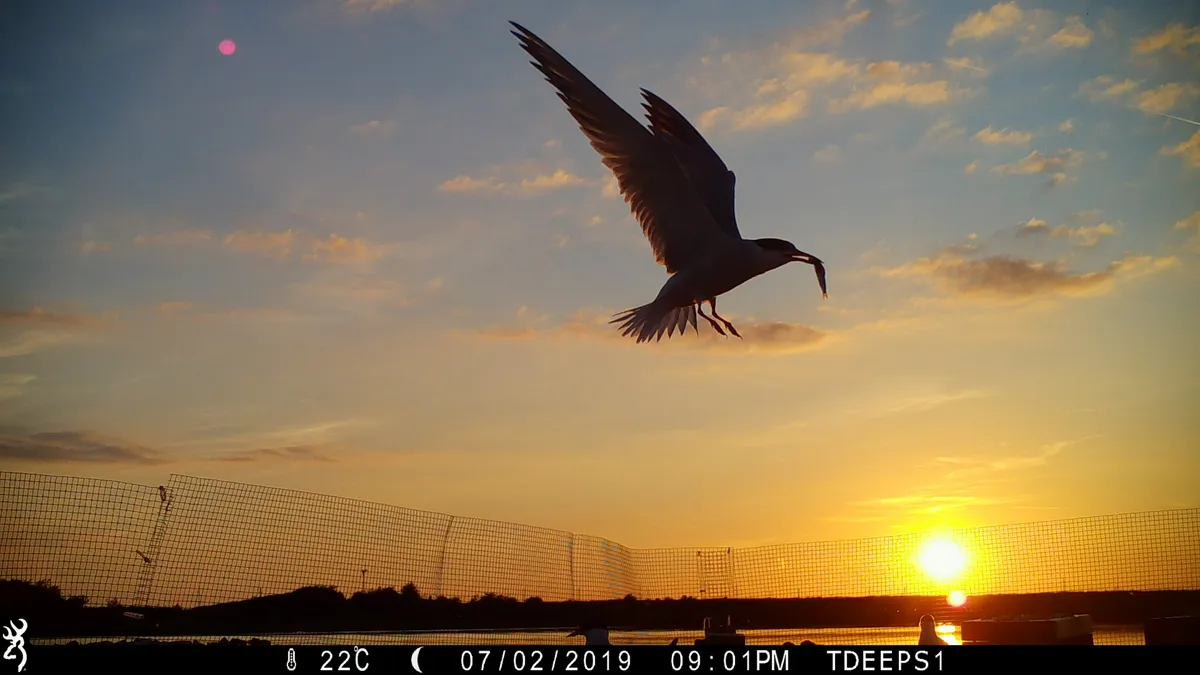Terns are small, agile seabirds and have historically used the Chichester Harbour area as a breeding site. In recent years, however, the population has suffered from tidal flooding, human disturbance and predators such as foxes.
Following the installation of two rafts made from recycled plastic, common terns were able to nest and successfully fledged 23 young, the first to do so since 2015.
Chichester and Langstone Harbours are home to three species of tern; the common tern, sandwich tern and little tern, all three of which have fared poorly in recent years.
The low lying, coastal habitat terns require for breeding is extremely vulnerable, especially during stormy weather. The last time any tern species in Chichester Harbour fledged more than 9 young was in 2003, so this has been an exceptionally good year.

Terns nested on rafts which were deployed in a large, semi tidal lagoon called Thorney Deeps, which has relatively sheltered waters and also provides easy access to feeding sites around the harbour.
Each raft has a sandy shingle floor and a low mesh fence to prevent chicks falling off. There are wooden shelters to help them avoid predators and a handful of decoy birds to encourage adults to breed there.

The Conservancy team were then able to monitor progress using motion sensor cameras installed in situ, which have provided some wonderful footage of the terns themselves.
“It is, as seabird colonies generally are, a complete soap opera from start to finish, including fights and squabbles, courtship and sex, good and bad parenting, a lot of noise and a lot of fish,” says Peter Hughes, Ecologist at Chichester Harbour Conservancy.
It took less than 24 hours for birds to show an interest and the first chick was born on 22 June, fledging after just 22 days.
"We are delighted that the terns have nested successfully on rafts, and so quickly! Common terns live for many years with the oldest known bird reaching the age of 33 so we hope some of ‘our' chicks will return to breed in and around Chichester Harbour in future years,” adds Hughes.
Following initial success of the project, the Conservancy is planning to install more rafts in the future.
